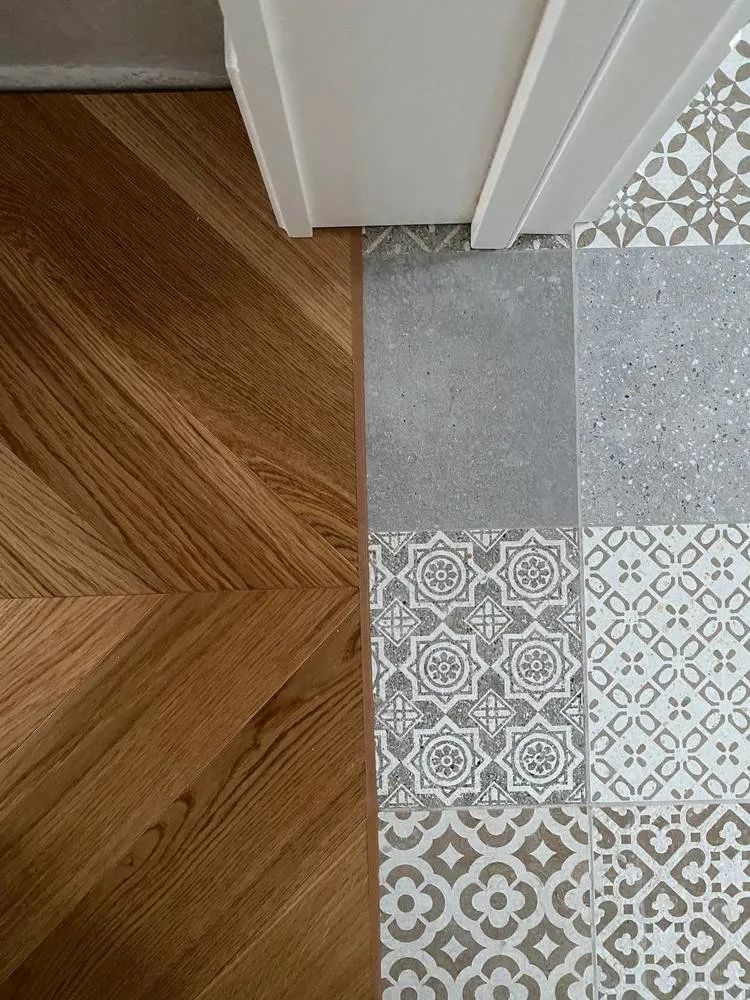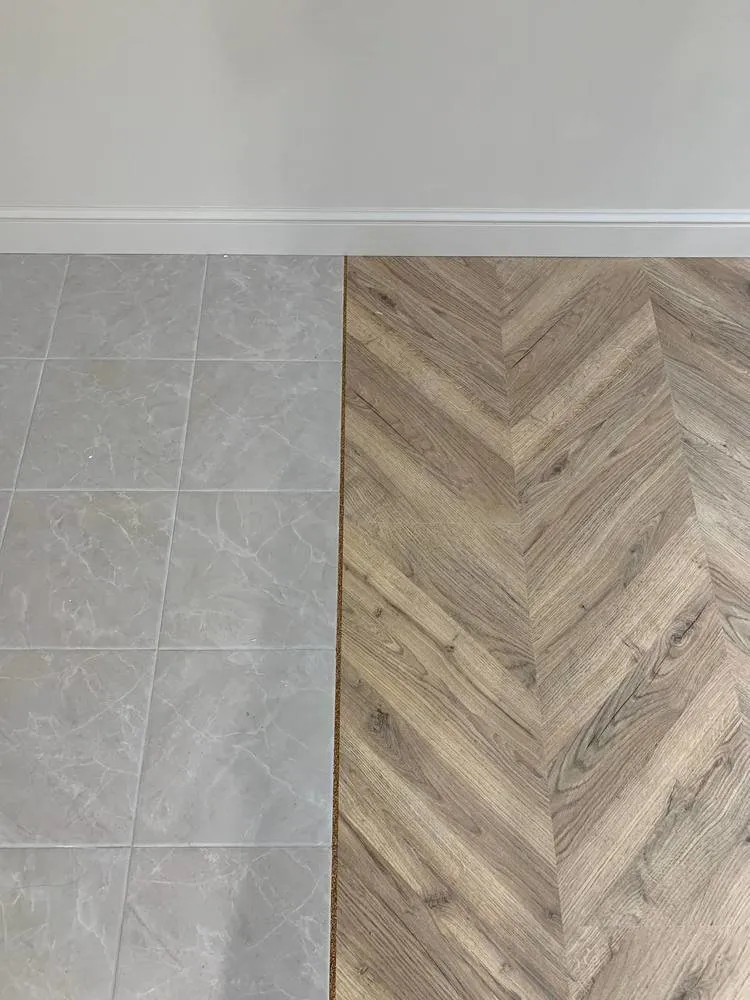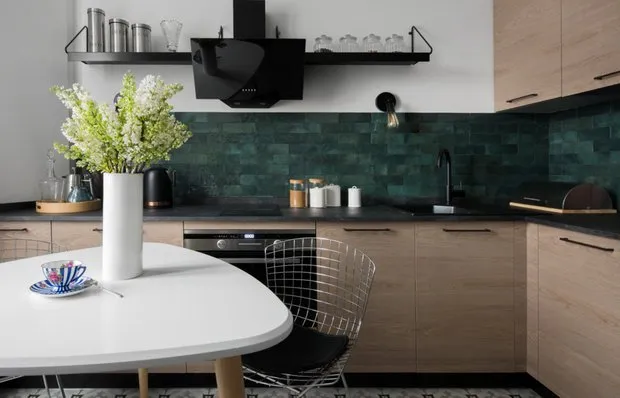There can be your advertisement
300x150
How to Properly Join Different Floor Coverings: Expert Tips
Smart solutions for your apartment
During renovation, some builders convince homeowners that creating a neat and invisible joint between different floor coverings is an impossible mission. Fortunately, in practice the situation is different: with the right approach, you won't need to install a threshold, and combining several coverings at once will not create additional problems. Planning to lay tiles and laminate? Together with expert Eugeniy Shamin, we explore how to avoid failed mistakes.
Eugene Shamin is the best DIY Instagram blogger of 2019, building and renovating homes for people from Forbes
What to lay floor coverings on?
Floating laminate and parquet are laid on different underlays: you can choose a regular budget porous underlay or cork. It is recommended to prefer the second option: over time, cork underlay does not compress, so laminate will not creak or walk. Cork underlay consists of 14-sided cells filled with nitrogen and oxygen. It always retains its shape, and also has sound insulation of 20 dB.

Photo: Eugene Shamin
Make preliminary calculations
You must ensure that all coverings align in one plane later, so it's important to understand the height of coverings before starting the screed. Let’s take a clear example: the thickness of tiles with adhesive is 14 mm. In this case, you buy laminate 12 mm thick and an underlay 2 mm thick – in total it equals the same 14 mm.
If coverings differ significantly in thickness (for example, you chose quartz vinyl tiles), you need to keep this in mind during the screed stage. Where the covering is higher, pour the screed slightly lower, and where it’s thinner, pour it slightly higher. This way, you’ll definitely end up in a single plane.

Photo: Eugene Shamin
What to use for joining floor coverings?
Cork compensator. For joining two different coverings, such as parquet and tiles, a cork compensator can be used. It can also be painted in any color if needed.
T-profiles. There is a huge variety on the market: aluminum, brown, black matte – to your taste and color. Sizes also vary, so choose them depending on the width of the joint.
Parquet sealant. This is the most effective and practical method, one of the best options in terms of aesthetics and quality of joining different coverings. It blends perfectly with stone, metal, and wood. You can be sure that the joint will never separate.

Photo: Eugene Shamin
Prepare surfaces for threshold-free covering
To lay covering without thresholds, you must prepare both surfaces. If tiles are cut on-site at the joint, they need to be finished with a diamond grinding wheel to ensure all edges are even, with no burrs or chips. The same applies to laminate: it must be cut perfectly. If you find yourself in a situation where the laminate and tiles have already been laid but you want to create an invisible joint, it’s best to use a renovation tool for the laminate: mark a straight line and cut it with the tool on the floor. Remember that all lines must be perfect.

Photo: Eugene Shamin
Don’t forget to glue laminate to the floor near the base
If you are laying laminate on underlay, you must glue the part that will join with tiles. How to do it? Cut small squares, about 5x5 cm, in the underlay before starting the joint. Later, pour adhesive into these squares and press something heavy on them for a day. This way, you glue the base of the laminate to the floor base. If you neglect this tip, over time the joints will start creaking, and the quality of your floor will deteriorate significantly.

Photo: Eugene Shamin
Leave a gap at the joint when laying laminate
Pay special attention to leaving a gap of at least 3–5 mm at the joint. If you don’t leave a gap, the laminate may “stand up”: covering breathes at a molecular level. Of course, it won’t expand too much, but the technical gap must be left.

Photo: Eugene Shamin
Photo on cover: Eugene Shamin
More articles:
 White Bathroom Ideas from Western Projects That We Love
White Bathroom Ideas from Western Projects That We Love What to Plant on the Dacha in July 2021
What to Plant on the Dacha in July 2021 5 Cool Tips for Organizing Space from a Professional + Before and After Photos
5 Cool Tips for Organizing Space from a Professional + Before and After Photos Where to Store Pans and Lids? Tips for Organizing Your Kitchen Once and for All
Where to Store Pans and Lids? Tips for Organizing Your Kitchen Once and for All How to Make a Budget Kitchen Look Expensive? Easily!
How to Make a Budget Kitchen Look Expensive? Easily! Coziest Balconies That Are Simply "Illegally" Cluttered
Coziest Balconies That Are Simply "Illegally" Cluttered No Wallpaper and Plaster: Creating an Accent Wall on a Budget and Easily
No Wallpaper and Plaster: Creating an Accent Wall on a Budget and Easily How to Choose a Stylish Carpet: Latest Trends of 2021
How to Choose a Stylish Carpet: Latest Trends of 2021